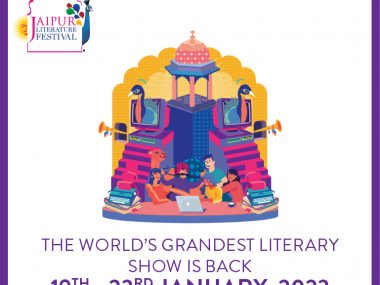Bhanumathi Narasimhan’s ‘Sita: A Tale of Ancient Love’ is an easy-read and welcome addition to the plethora of publications already adorning libraries and homes the world over.
‘Sita – A Tale of Ancient Love’ by Bhanumathi Narasimhan (Ebury Press- An imprint of Penguin Random House India – 304 pages, Rs. 340) on the Mithila princess glides from the past to the present seamlessly with kaleidoscopic imagery. If not attentive, one could miss the context for its contemporary flow of explanations so well packed with minuscule detailing of emotions and incidents.
Narasimhan’s literary background, scholarship, and knowledge of traditions are distinctly manifest in her book ‘Sita,’ where her graphic descriptive nuances vividly. With tranquil peace in her soul, the author imagines how Sita looked at Rama and how the vibes between them were brief but magical for a “love at first sight”!
“Life is full of duality,” and the reader has to be prepared to accept certain basic concepts without debate. Some assumptions are what they are and cannot be challenged. One need not question the “how” and “why” of events or situations as they reportedly happened centuries ago.

To a question about why she chose to write about Sita, the evocative author who holds a Master’s Degree in Sanskrit Literature from Bangalore University says, “Answer is in the question! This time it’s all about Sita. It is about seeing the Ramayana from Sita’s eyes. The more I learned about her through the scriptures, the more I was fascinated and felt an intimate connection. Sita is such a delicate balance of strength with serenity, sensitivity with sensibility, beauty with brilliance, courage with compassion, so ethereally brilliant – yet approachable. The more you know her, you cannot but love her”.
For instance, Sita converses with sparrows and sunbirds, flora and fauna with enviable ease – whether at Ashoka Vatika or in her humble hut. Narasimhan’s observations on Sita’s environs would make a zoology student envious. However, her metaphors tend to be onomatopoetic, making the read more pleasant.
On being Gurudev Sri Sri Ravishankar’s sister
To a query by this writer, “the fact that you are the sister of a world-famous guru, did you have any problems or handicaps prepping for the book?” the author says: “Having a Guru is what opened my eyes to the deeper meanings hidden in the stories. My father would tell us these stories when I was younger, and I would also have so many questions. Later, when I heard Gurudev speaking about the wisdom beyond the events, a new dimension of understanding opened up for me, which I have tried to share in my narration of this endearing epic. The wisdom makes the stories practical and relevant even today.”
In an interesting tidbit, it is revealed, King Janaka was very particular about the education of his daughters Sita and Urmila. So, the learned king organized a grand debate and discussion among brahmavadins – wise sages. The winner of the debate would be awarded 1,000 cows. As a result, many celebrated scholars from distant lands arrived in Mithila. Among the participants were Rishi Yagnavalkya and Brahmavadini Gargi.
“Sita was drawn to Gargi, who was clad in a simple sari … and adorned with a tulsi mala.” Following the friendly back-and-forth repartee between Yagnavalkya and Gargi, “Sita said, ‘O revered one, from what I understood of the conversation, I feel that there can be no loser in a debate on the Brahman. Either you have shared knowledge, or you have gained supreme knowledge. So it is a win-win situation.’
We are all aware that the character of Sita is the epitome of everything good – noble, beautiful, peerless – as portrayed in the Puranas or even now contemporaneously interpreted in local sabhas. But was Sita without blemish and any fault whatsoever?

Are our ancient texts overdoing this description? Is this not an exaggeration? Narasimhan says, “Rama and Sita played their roles as human beings. Even for an avatar, when they come in the form, some limitations can be perceived as flaws because the form is limited. It will have pluses and minuses. Our whole journey is from the form to the formless, from the gross to the subtle, finite to infinity. And this is an inward journey. Yet, even in the form, they were strong and handled situations according to the need of the hour. Today no one has to lift a bow, but the challenges are different.” But she quickly adds, “it is the brilliance of the mind that stands out in the way situations are handled by them. See, these epics are there to spark contemplation so that you can reflect and imbibe these higher qualities in your life. The scriptures say kavya sastra vinodena kalo gacchati dhi matah. The intelligent ones invest time in the epics, arts, and culture when you take an interest in them – it is already a sign of a mature and refined mind. And when you become a gunagrahi, focused on the positive aspect, then there is so much to learn and imbibe that will enrich our lives. For example, Rama has ten good qualities and one flaw – but even the perceived flaw was only for loka kalyan. So refining our understanding is the key to unlocking the hidden secrets in these epics.”
Deft Turn of Phrase Appeals
A certain familiarity has to be assumed when reading Sita. We are fortunate to be part of today’s technology with a liberal mindset that encourages the flowering of the mind through metaphysical explanation since this ancient epic is challenging to describe with modern paradigms and parameters. Narasimhan’s deft turn of phrase as she edits at appropriate places adds to the suspense and goads one to continue reading. This, even though many of us have read the story earlier. Undoubtedly, an intriguing blend of philosophy and history as perceived by the author, meditation teacher, and singer has been handed down without question.
However, when you ask her, “Did you feel you had an obligation to necessarily tread on the beaten path as documented by earlier commentators without sounding irreverential?” she responds: “It was not a sense of obligation, but I thoroughly enjoy and respect the sincerity and devotion with which the earlier scriptures like the Valmiki Ramayana and the Ramacharitamanas have been written. However, my book is a perspective from the eyes of Sita as I have understood her.”
The book tells how Sita constantly admired the Shiva-Dhanush whenever she stepped into the room where the Mithila King Janaka’s Bow was housed. Any particular reason why Sita wasn’t allowed to browse too long in Janaka’s Bow room? Says Narasimhan, “Sita moved into a transcendental state of consciousness in the presence of the bow even as a child. This is the reason they watched over her while she was with the bow.
Sita felt that she was a part of that divinity. She felt a sense of belonging with everything. For, in that space, you begin to understand a little of this deep mystery.” The Brahman runs everything on earth, but it cannot be explained; we know from the book. It is like good cooking, even without knowing the recipe.
That is something all mortal cooks can relate to, excellent natural cooks!
(Raj S Rangarajan is a freelance journalist based out of New York)















